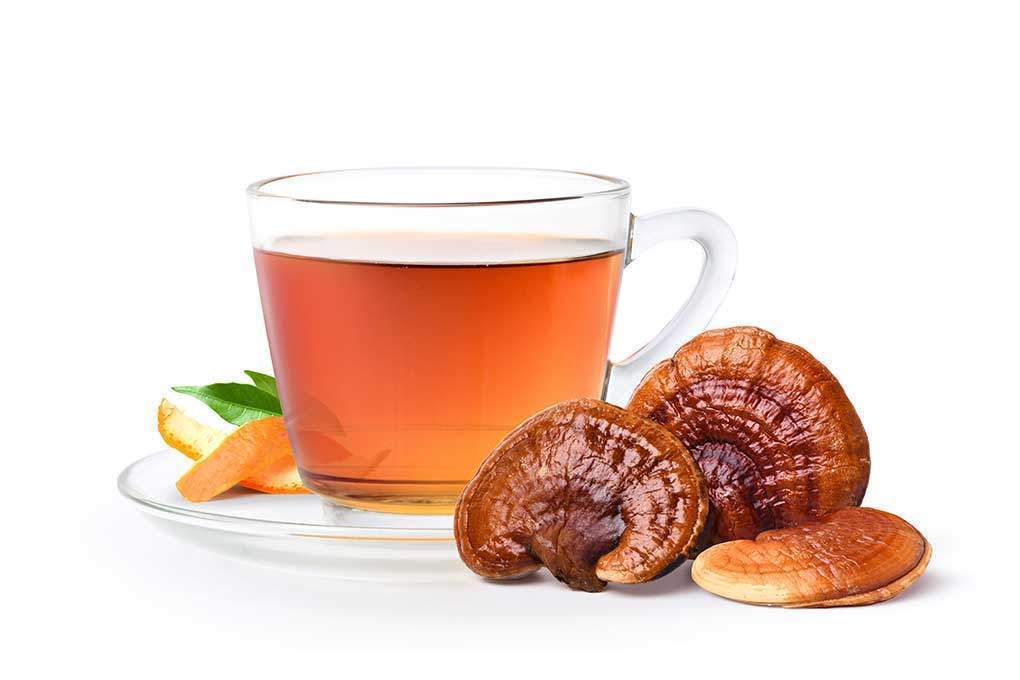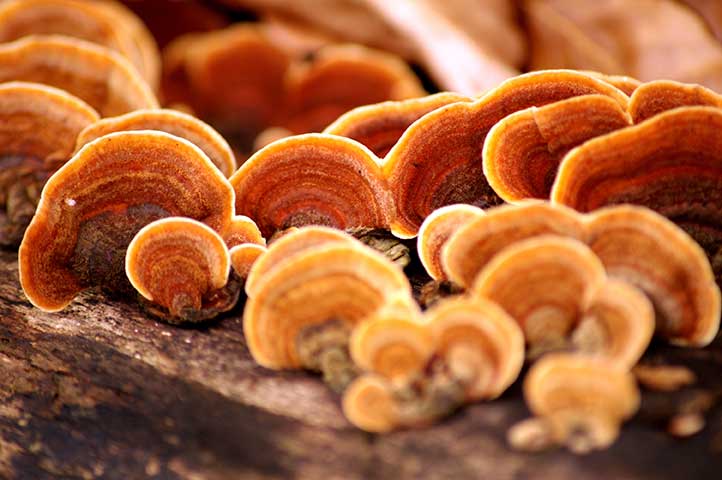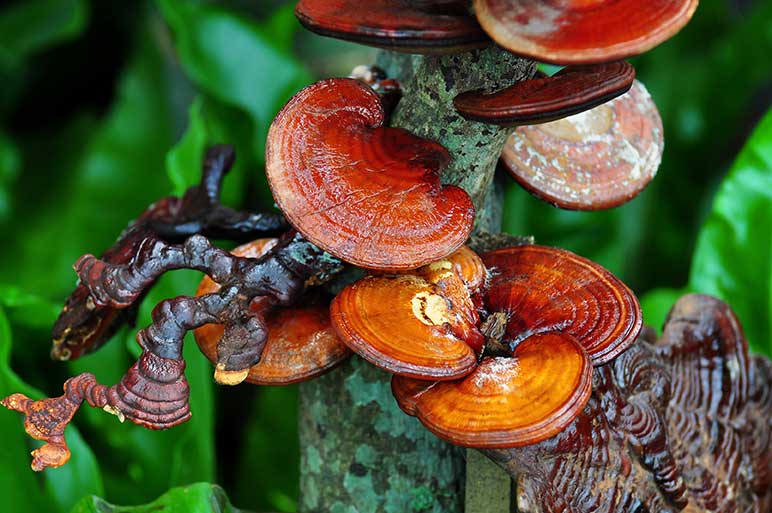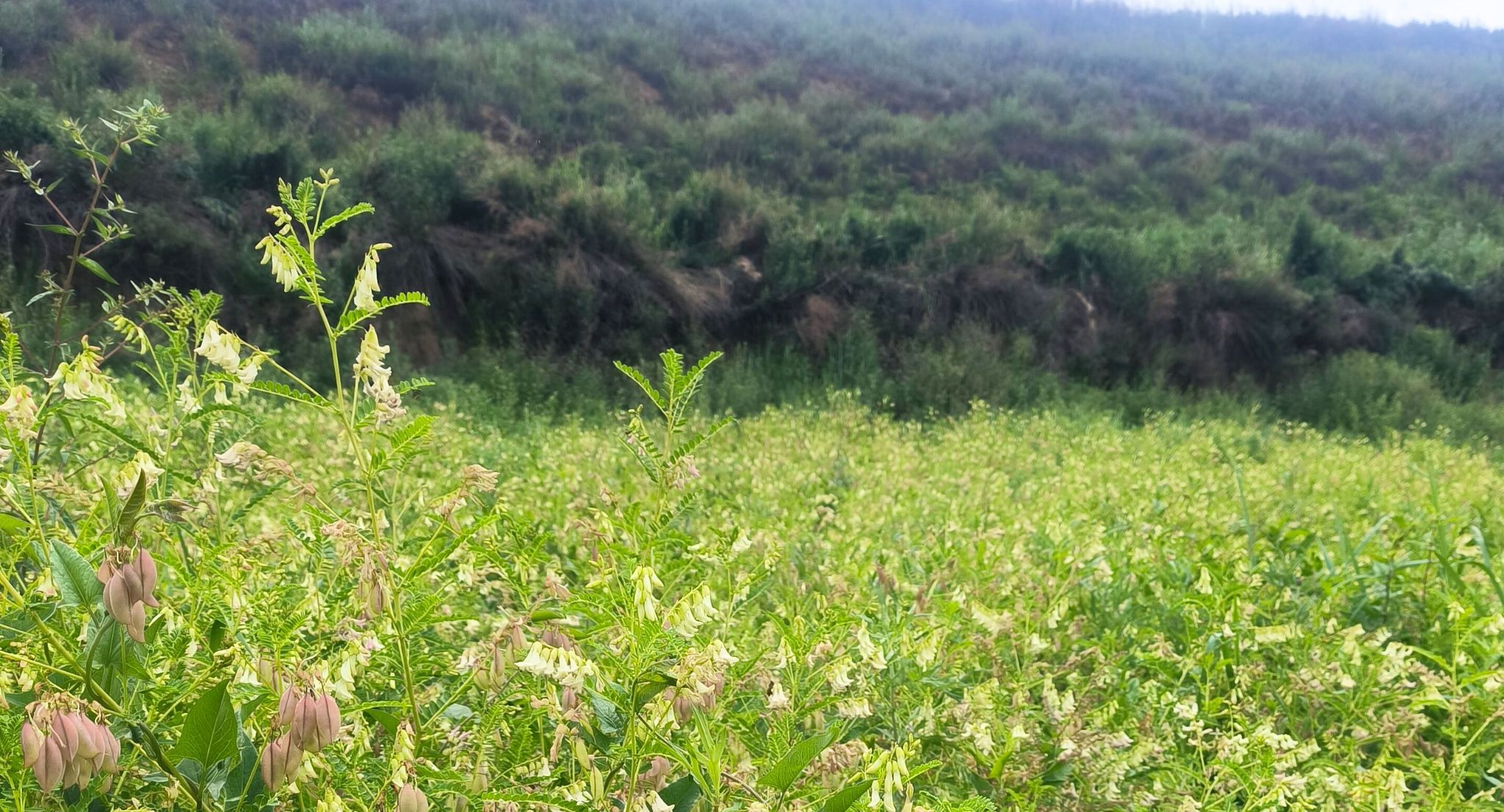Another ancient herb has made its way into the modern consciousness of the health and wellness world in North America in the past decade.
The Spirit Mushroom
Chances are you’ve heard of reishi mushrooms by now. Reishi has become popular due to its many reported health benefits. The scientific world has also shown an interest in reishi because of its unique chemical makeup consisting of phenolic compounds, antioxidants, glucans, and polysaccharides. Reishi mushrooms are quickly becoming a household name for those looking to support their overall health and wellness along with other “super-mushrooms”.
Reishi has a fascinating history with its fame going back thousands of years. The herb continues to gain relevance as modern chemistry reveals its unique nutrition and as we understand more about its potential benefits for health and wellness.
Breaking Down its Names: Ganoderma Lucidum
Learning the entomology of a plant or medicinal herb’s name is a great way to unpack and understand it’s history and benefits.
With its smooth and glossy, dark red outer skin, it’s no wonder that reishi was named “lucidus”, which means shiny or brilliant in Latin. The “Ganoderma” comes from its place in the world of mushrooms as part of the Ganodermataceae family.
The taxonomy and naming of the Ganoderma genus by European biologists prior to 1821 varied as researchers debated the best ways to categorize the mushrooms. Similar mushrooms and those of different branches of the same family also caused confusion for early European biologists which lead to older records of the species having different names.
Lingzhi 靈芝 – Reishi’s Chinese Names
When we look at the Hanzi or Chinese writing of the word we find an interesting combination of words. 靈 means spirit and 芝 translates to fungus- making the literal meaning of Lingzhi or 靈芝 spirit fungus.
A deeper dive into the actual Chinese meaning behind the name has connotations with the spiritual and divine, along with vitality or longevity- an almost divine health and power. That’s why it’s known as the “Mushroom of Immortality” in China and around the world.
Japanese Names for Reishi- Zuiso
The Japanese names for Reishi have similarities to the Chinese names, but they give us even more understanding about the mushroom’s significance and reputation.
Mannentake (万年茸) is the best known of the Japanese names, meaning “10,000-year mushroom”. Like some of its other names, implies agelessness and immortality. The term sensō (仙草) translates to immortality plant while zuisō (瑞草) means auspicious plant.
Where Does Reishi Come From?
Ganoderma Lucidum is native to small areas of China and Europe. Interestingly, reishi and its related mushrooms can be found all around the world. While it was known that reishi first gained prominence in Asia, researchers weren’t sure until modern times that the species was only native to those two areas. Not only can reishi be found growing wild in the Western Hemisphere, there are records of it all over the world (along with its close relatives). Different lineages of G. Lucidum can be found all around the world.
Important Bioactive Components of Reishi
The scientific world has also shown an interest in reishi because of its unique chemical makeup consisting of phenolic compounds, antioxidants, glucans, and polysaccharides.
Reishi contains every essential amino acid, along with high level of polysaturated fatty acids. It contains terpenoids, steroids, phenols, and host of other bioactive molecules.
Triterpenes
Terpenes can be found in many plant sources. They’re of interest to the scientific community because of their anti-inflammatory properties and several other important health applications.
Plants produce a special kind of terpene called triterpenes, and they help the plant to survive by supporting growth and protecting it from outside diseases. Researchers are interested in learning how to harness triterpenes into therapies that can help humans.
Reishi is thought to have over 100 kinds of triterpenes and over 50 of those are unique to the plant. They’re classified as ganodermic acids, ganoderic acids, lucidenic acids, and other classes.
Phenolic Content of Reishi
The phenolic compounds found in plants have many different functions and reishi mushrooms have an array of them. Each of the phenolic compounds found in reishi have antioxidant properties and work in different ways as flavonoids and phenolic acids.
- Gallic acid
- Trans-cinnamic acid
- Quercetin
- Kaempferol
- Hesperetin
- Naringenin
Polysaccharides found in Reishi
Polysaccharides are long chain carbohydrates made up of sugars. They function as energy storage but also promote cellular function and communication. The presence of polysaccharides in reishi are to have effects on blood sugar and neuroprotective benefits.
Fatty Acid Content of Reishi
Researchers investigated whether the mycelium of reishi and the actual mushroom had different levels of fatty acids. Reishi mushrooms have an impressive number of fatty acids.
- Palmitic Acid
- Stearic Acid
- Oleic Acid
- Elandic Acid
- Linoleic Acid
What Does Reishi Mushroom Do?
One major advantage to understanding the benefits of reishi is the extensive amount of human studies behind it.
Top Benefits of Reishi
- Neuroprotective/ Brain Health
- Antibacterial Properties
- Immune Support Properties
- Healthy Liver Support
- Healthy Blood Pressure and Heart Health
Antioxidant Support
Antioxidants work to support health on a cellular level. They can affect many areas of health and wellness. Most of the research surrounding reishi shows the importance of its complex antioxidants.
Heart Health and Diabetes Research
One human study looked at the effect of reishi’s antioxidants on individuals with high cholesterol and mild hypertension.
The results showed that reishi had positive effects especially for high cholesterol levels. The results indicated that reishi may have mild antidiabetic properties.
Another study looked deeper at patients with type 2 diabetes. Using a special kind of extract, the researchers hoped to get a better understanding of how reishi effected blood glucose levels.
The special extract did prove to have positive effects for lowering the blood glucose concentrations in the study group.
Neuroprotective Studies on Reishi Mushroom
Researchers knew that the polysaccharides found in reishi mushrooms seemed to have protective effects for injured neurons. One study looked at how reishi polysaccharides were achieving this affect.
Oxidative stress and inflammatory markers are related to neurodegenerative disorders, and researchers hope to develop new ways of understanding and possible treatments for this kind of disorder.
Polysaccharides of reishi worked by inhibiting oxidative stress and slowed the expression of proteins that cause cell death, showing the researchers how this neuroprotective effect was achieved.
Immune Support Research
There have been many different areas of research focused on the immune supporting properties of reishi. The positive effects of reishi for immune support can be attributed to its polysaccharide content, and β-d-glucan content.
Study on Human Pathogenic Bacteria
A study looked at the effects of reishi extract on common bacteria including salmonella typhimurium and streptococcus mutans, the bacteria that causes strep throat. The goal was to screen reishi for its active antimicrobial constituents and their possible uses for common infections of the human body.
The phytochemical analysis for the study showed ascorbic acid, flavonoids, and phenols within the reishi extract.
This preliminary study showed that reishi mushroom could be an ideal ingredient for antibacterial treatments in bio-pharmaceuticals. The study led researchers to believe that reishi could be used to develop new therapies for the treatment of urinary tract infections.
How to Take Reishi Mushroom?
Reishi has been used as a folk remedy for centuries. It’s easy to see why people are so interested in trying this “magic” mushroom- but what’s the best way to take it? With expensive capsule products, tinctures and a host of other new products featuring medicinal mushrooms it can be overwhelming and confusing even to find the best option. Herbal tea is an affordable option that you’ll enjoy bringing into your daily routine! Who doesn’t love to snuggle up with a comforting cup of hot tea?
Chu, T. T., Benzie, I. F., Lam, C. W., Fok, B. S., Lee, K. K., & Tomlinson, B. (2012). Study of potential cardioprotective effects of Ganoderma lucidum (Lingzhi): results of a controlled human intervention trial. The British journal of nutrition, 107(7), 1017–1027.
Kamra, A., & Bhatt, A. (2012). EVALUATION OF ANTIMICROBIAL AND ANTIOXIDANT ACTIVITY OF GANODERMA LUCIDUM EXTRACTS AGAINST HUMAN PATHOGENIC BACTERIA.
Gao, Y., Lan, J., Dai, X., Ye, J., & Zhou, S. (n.d.). A Phase I/II Study of Ling Zhi Mushroom Ganoderma lucidum (W.Curt.:Fr.)Lloyd (Aphyllophoromycetideae) Extract in Patients with Type II Diabetes Mellitus.
Veljović, S., Veljović, M., Nikićević, N., Despotović, S., Radulović, S., Nikšić, M., & Filipović, L. (2017). Chemical composition, antiproliferative and antioxidant activity of differently processed Ganoderma lucidum ethanol extracts. Journal of food science and technology, 54(5), 1312–1320.
Chan, Jannie & Asatiani, Mikheil & Sharvit, Lital & Trabelsy, Beny & Barseghyan, Gayane & Wasser, Solomon. (2015). Chemical Composition and Medicinal Value of the New Ganoderma tsugae var. jannieae CBS-120304 Medicinal Higher Basidiomycete Mushroom. International Journal of Medicinal Mushrooms. 17. 735-747. 10.1615/IntJMedMushrooms.v17.i8.40.
Sun, X. Z., Liao, Y., Li, W., & Guo, L. M. (2017). Neuroprotective effects of ganoderma lucidum polysaccharides against oxidative stress-induced neuronal apoptosis. Neural regeneration research, 12(6), 953–958.
Lin Z. B. (2005). Cellular and molecular mechanisms of immuno-modulation by Ganoderma lucidum. Journal of pharmacological sciences, 99(2), 144–153.









